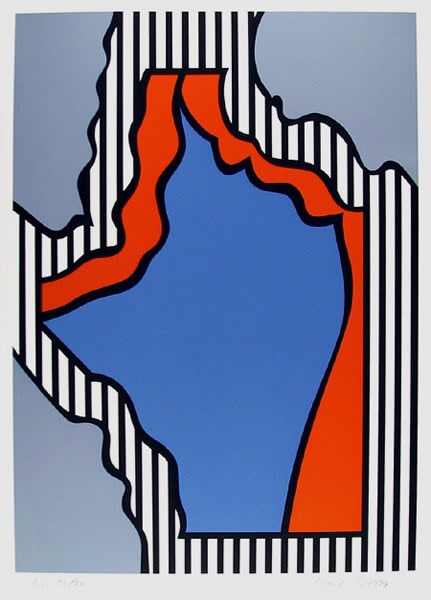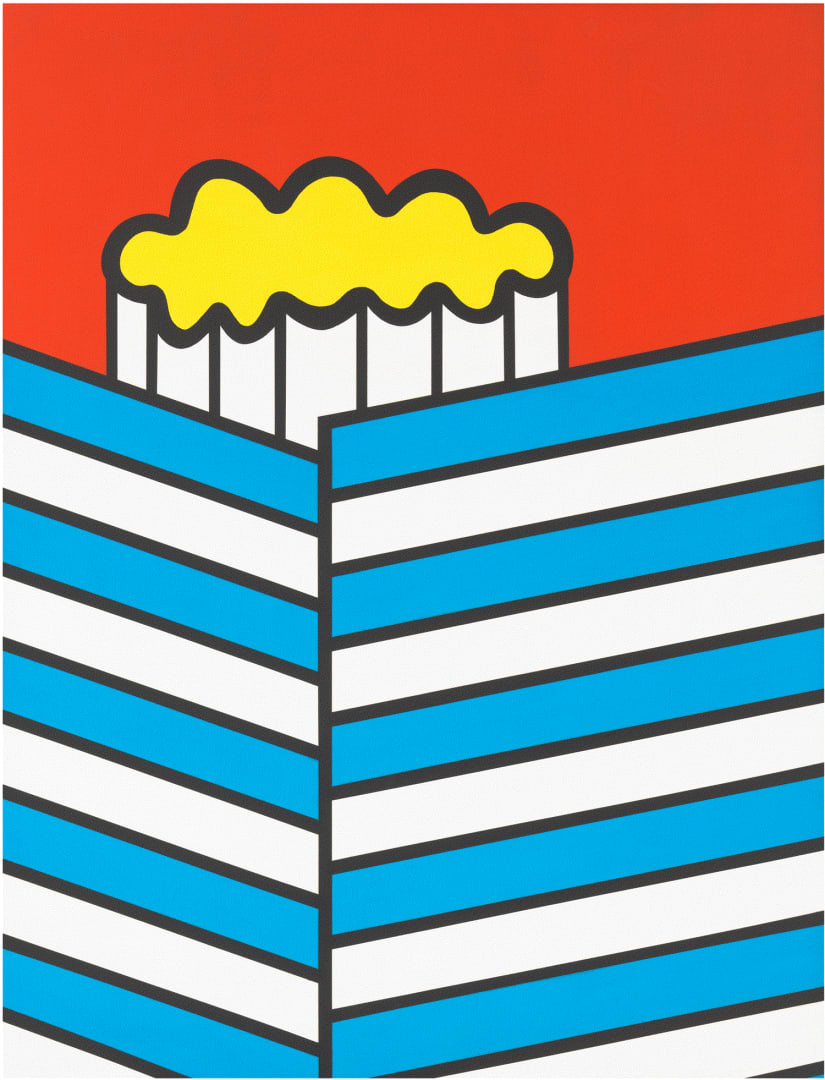Nicholas Krushenick
I have a series of forms and shapes that I am in love with. When I want sort of to refine them, I make a lot of drawings, playing around to see if a new one is going to work, do what I want it to do...They have to offer a certain kind of dynamic element. They can’t be too literal as a form. They have to have a certain kind of mystery, so you can’t identify them, but they suggest many forms. - Nicholas Krushenick
Nicholas Krushenick was a mid-century American artist who bridged the gap between Abstract and Pop Art to create paintings and prints in a style often referred to as Abstract Pop.. He was also an educator and gallerist, who supported many up-and-coming New York artists who were often overlooked by mainstream galleries.
Krushenick was born in the Bronx, New York in 1929, at the start of the Great Depression. His father, who was born in the Ukraine, worked as the superintendent of the apartment building where the family lived. He also worked for the WPA as a carpenter and helped to build the Empire State Building and the Chrysler Building. In his spare time, he acted in Ukrainian and Russian plays in theaters on the Lower East Side. His mother was born in upstate New York, and drew and painted as a hobby.
Instead of finishing high school, Krushenick joined the Army at age 17. He completed his high school diploma while in the Army. After his discharge, Krushenick attended the Art Students League under the GI Bill and worked in construction from 1948 through 1950. After two years at the Art Students League. Krushenick went to the Hans Hoffman School of Fine Art.
He focused on painting in the early 1950s and earned a living designing window displays for department stores and making frames for the Whiney Museum, The Met and MoMA.
In 1951, he married his wife, Julia. The couple had one son.
Krushenkick showed his paintings for the first time in 1956, in a joint exhibit with his older brother, John Krushenick, at the Camino Gallery, a co-op to which both artists belonged. A year later, the brothers opened the co-op Brata Gallery on 10th Street, one of the galleries that included some of the best, avant-garde artists of the day.
Krushenick left the gallery in 1962 and launched his career with solo shows in New York, Paris, Germany, VIenna and other venues. His work was also included in seminal shows at the Whitney, the Guggenheim and other museums. He also began to explore printmaking and had a fellowship at Tamarind Lithography Workshop in Los Angeles in 1965.
During his career, Krushenick taught as a visiting artist at schools around the country and at the University of Maryland from 1977 to 1991.
Krushenick died in Manhattan in 1999, at age 70.
His works are included in the permanent collections of the Albright-Knox Art Gallery, the Baltimore Museum of Art, the Cleveland Museum of Art, the Dallas Museum of Fine Art, the Empire State Art Collection; the Grey Art Gallery at New York University; the Los Angeles County Museum of Art, the Met, MoMA, the San Francisco Museum of Modern Art, the Smithsonian, the Stedelijk Museum, the Whitney and other major venues around the world.
References:
Roberta Smith. Nicholas Krushenick, 70, Abstract and Pop Artist. The New York Times. February 7, 1999.
Paul Cummings. Oral history interview with Nicholas Krushenick, March 7-14, 1968. Smithsonian Archives of American Art.


